Easy to Love

Brief Synopsis
Cast & Crew
Charles Walters
Esther Williams
Van Johnson
Tony Martin
John Bromfield
Edna Skinner
Film Details
Technical Specs

Synopsis
Ray Lloyd, operator of the lush Cypress Gardens resort in Winterhaven, Florida, credits his marketing acumen--namely, using bathing beauties to promote everything from toothpaste to freezers--with having "made this country bathing suit-minded." Ray's star attraction is swimmer Julie Hallerton, who has worked tirelessly for him for eight years. One day, after completing a water-skiing show, Julie complains to Ray about her long work hours, and is infuriated when he asks her to cancel her dinner date that evening and perform an extra show for a film crew shooting a travelogue on Cypress Gardens. Julie ends up giving in to his request, but after the show, informs Ray that she is quitting to marry her swimming partner Hank. When Ray offers to take her to New York, however, Julie joyfully accepts, and while packing her bags, she confesses to her roommate, Nancy Parmel, that she lied about marrying Hank to make Ray jealous. Despite his promise to show Julie a good time, Ray keeps her busy working in New York. At a Life magazine photo shoot, Julie attracts the attention of debonair Barry Gordon, a singing star who is also being photographed. Barry arranges to take the place of the male model in a lipstick ad Julie is posing for, and their on-camera kisses soon become genuine. When her long work day finally ends, Julie persuades Ray to take her to see Barry's nightclub act, but he insists on leaving early. Back in her hotel suite, Julie gets a call from Barry and agrees to go out with him, and they dance late into the night. When Barry learns that Julie swims, models and even types for Ray for only seventy-five dollars a week, he arranges for her to meet Oscar Levenson, who is producing a new water follies show. The following day, Julie auditions for Oscar, who offers her a job at a considerably higher salary than Ray's. That afternoon, Julie tells Ray about her new job, and after a quarrel, Ray pretends to give up gracefully, leaving Julie shaken. She is unable to get Ray out of her mind, and at the last minute, rushes to the airport and returns to Florida with him. Ray asks Julie to dine with him that evening, adding that he has something to tell her that will make her very happy. Julie euphorically tells Nancy that she thinks Ray will propose that night, and when Barry calls from New York, Julie pretends not to be in. Hank comes by to tell Julie that his father has struck oil and wants him to return to Texas, and she gently tells him that she is in love with someone else. Hank then storms into Ray's office and accuses him of stealing his girl friend, and Ray is surprised to learn that Julie is in love with him. That evening, when Julie comes for dinner, Ray pretends to take a phone call from another woman, and makes cavalier remarks about having too much fun to settle down. He then tells Julie his "good news": that he will reward her loyalty by doubling her salary. Crushed, Julie runs out, leaving Ray feeling suddenly depressed. Julie returns to the resort and is surprised to find Barry sitting at the piano, and when he sings a love song to Julie during her water show the following day, Ray becomes jealous. Barry asks Julie to go to Paris with him, and before she can ascertain whether the offer includes marriage, they are interrupted by Ray, who contrives to get Julie alone with him in his motorboat. Ray confesses his love for Julie and proposes, only to discover that Julie had jumped out of the boat the moment he started talking. The next morning, after performing in a spectacular water-skiing show, Julie tells Barry she is quitting her job at the resort. Nancy accidentally knocks Julie out with a water ski, and Ray, Hank and Barry rush to her side. While Hank is jealously attacking Barry, Ray carries Julie away, and when the other suitors see him lovingly tending to her, they graciously concede defeat. Nancy then tells Hank she has always been interested in him, and Barry meets a stunning model by the pool. Ray revives Julie by repeating his marriage proposal, and they kiss.

Director
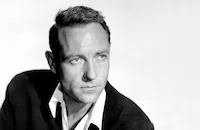
Charles Walters
Cast

Esther Williams
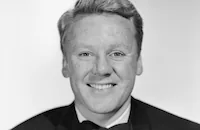
Van Johnson

Tony Martin
John Bromfield
Edna Skinner

King Donovan
Paul Bryar

Carroll Baker
Eddie Oliver
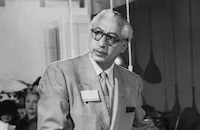
Benny Rubin
Harriett Brest
Helen Dickson
Ann Luther
Maude Erickson
Peggy Remington
Violet Seton
Dorothy Vernon
Edward Clark
June Whitley
Richard Downing Pope
Bud Gaines
Peter Adams
Byron Kane
Reginald Simpson
Joe Keane
John Treback
Emory Parnell
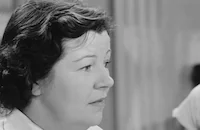
Margaret Bert
Joe Mell
Hal Berns
George Davies
Dick Simmons
Larry Harmon
Perry Sheehan
Fenton Hamilton
Lillian Culver
Sondra Gould
Sig Frolick
Phil Dunham
David Newell

Charles Walters
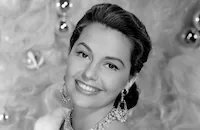
Cyd Charisse
Wilson Wood
Crew
Busby Berkeley
Jim Brock
Ridgeway Callow
Mann Curtis
Dave Deverman
Robert J. Eastman
Alvord Eiseman
Cedric Gibbons
Johnny Green
Sydney Guilaroff
E. Darrell Hallenbeck
Lennie Hayton
Earl Hollowell
Henri Jaffa
Ray June
Gus Kahn
Carmen Lombardo
Skip Martin
Vic Mizzy
Joe Pasternak
John Pasternak
Richard Pefferle
Cole Porter
Ed Raven
William Roberts
Helen Rose
Gene Ruggiero
Pete Rugolo
Robert Saunders
Douglas Shearer
Jack Martin Smith
William Spencer Jr.
George Stoll
William Tuttle
Laslo Vadnay
Laslo Vadnay
Betty Wand
Edwin B. Willis
Eddie Woehler

Videos
Movie Clip




Trailer
Film Details
Technical Specs

Articles
Easy to Love 1953 - Easy to Love
Esther Williams was at the top of her career when she made Easy to Love. Audiences loved her and flocked to her films, despite the fact that one plot was virtually indistinguishable from the next. Comedy, romance and swimming, of course, were all that fans wanted from an Esther Williams movie, and Williams was happy to oblige.
Williams had worked with director Charles Walters and choreographer Busby Berkeley before and was familiar with their production styles. Easy to Love was also the fifth and final film in which she co-starred with frequent on-screen partner Van Johnson. "By this time Van and I were as synchronized as any two swimmers in the pool...We were family," said Williams in her 1999 autobiography The Million Dollar Mermaid. "Through the years, I swam with Van, married him, fought with him, and made love to him - all on camera. We knew our lives, our secrets, and our public and private personas, even though off camera we had little or no contact."
Before shooting began on Easy to Love, Esther Williams found herself in a dilemma: she was pregnant. It would be her third child with second husband Ben Gage. While the pregnancy was happy news for her, the timing was tricky as Williams would have to spend the majority of the film in bathing suits. She dreaded telling the film's producer, Joe Pasternak. "When I realized what was happening," she said, "the first person I thought of wasn't Ben, but poor Joe Pasternak. This would be the third picture I did for him when I was pregnant. Under the best of circumstances, making a movie and making a baby are a head-to-head race against time. When you have to consider the bathing suit factor and the daredevil stunts associated with Busby's water extravaganzas, it gets even more difficult. I picked up the phone to make the call, knowing Joe would not be happy to hear what I had to say."
In the end, however, Pasternak and everyone on the production pulled together to make Easy to Love happen before Williams' pregnancy started to show. The shooting schedule was rearranged so that all of the water sequences would be shot first.
Wearing a bathing suit with a rapidly expanding belly wasn't the only thing Williams worried about with her pregnancy during the shoot. She was also concerned about performing some of the dangerous water stunts designed by Busby Berkeley. "Busby was setting me up for yet another series of high-flying athletic feats," said Williams, who was used to Berkeley's daredevil choreography. "He had already rounded up sixty-eight of the greatest water-skiers from all over the world. They were already under contract and rehearsing together so they'd be ready to ski with me, the star. This posed a minor difficulty - I'd never water-skied before in my life."
It was common for MGM to assume that Esther Williams would be an expert in anything relating to water. However, Williams knew that waterskiing would require her to learn an entirely new skill. "...waterskiing really has nothing to do with swimming and demands an entirely different set of muscles and skills," explained Williams in her autobiography. "When you ski, your whole body is tensed and held together by an arched back. You need very strong arms, but those long, smooth muscles and powerful leg kicks you develop as a swimmer aren't much help." The studio promptly got her a waterskiing coach and told her to learn - fast.
While Williams perfected her new waterskiing skills, Busby Berkeley was busy dreaming up a trio of eye-popping water spectacles for the film. Berkeley, whom Williams described as "a showman and a show-off," wasn't capable of thinking small. The outdoor location shooting around Cypress Gardens unleashed his creative furor, especially for the elaborate finale he was planning. "Freed from the confines of the pool," said Williams, "(Busby) went wild in the wide open spaces of Lake Eloise. He had so much more room to work with, and with sixty-eight of the world's greatest water-skiers, plus the girls from the Cypress Gardens water show (the Aqua Maids), he had over a hundred troops to command...He felt like King of the World."
Berkeley relished the challenge. "This was the kind of thing I loved," he said in a later interview. "I had Esther and eighty boy and girl skiers whizzing along on skis carrying big flags. I mapped out an intricate pattern of movements for them through the cypress trees and around huge geysers that shot sixty-foot sprays into the air. I had twelve boy skiers going over twelve-foot-high jumps simultaneously. In one part of the routine I used a hundred girls in a huge swimming pool that I had built in the shape of the state of Florida. I used a helicopter in another part of this sequence, with Esther standing on a trapeze while hanging from the plane, then diving from a height of eighty feet into a V-shaped formation of skiers traveling at thirty-five miles per hour across the lake...I wanted to create the effect that she might land right in the audience."
While Williams did almost everything Berkeley required of her for the extravagant finale, there was one thing she refused to do: perform the eighty foot dive from the trapeze. "Certainly the possibility that I might be injured was never a factor when Buzz was dreaming up his routines; he just assumed I could do anything," said Williams. Fearing for her unborn child as well as her own safety, Williams tried to convince Berkeley to use her friend Helen Crelinkovich, an accomplished platform diver, as a double for the one stunt.
"I hate doubles," argued Berkeley.
"Not as much as I hate miscarriages," Williams responded. "I'll do everything else you ask of me, Buzz - I'll even ski-jump over the orchestra at the end - but not the dive. I want to hang on to this baby."
In the end, Berkeley relented and used Crelinkovich in the finale, and she made a perfect eighty foot dive for the cameras - three times. The finale of Easy to Love was a triumph for Busby Berkeley and considered by many to be one of the crowning achievements of the choreographer's illustrious career.
Easy to Love was easily another hit for Esther Williams and MGM. Audiences loved the spectacular waterskiing sequences and the lush beauty of the authentic Florida scenery.
In addition to the stunning water numbers, co-star Tony Martin performs several charming songs including "Didja Ever," "Look Out, I'm Romantic" and the classic title song written by Cole Porter.
Producer: Joe Pasternak
Director: Charles Walters
Screenplay: William Roberts; László Vadnay (story and screenplay)
Cinematography: Ray June
Art Direction: Cedric Gibbons, Jack Martin Smith
Music: George Stoll, Robert Van Eps (both uncredited)
Film Editing: Gene Ruggiero
Cast: Esther Williams (Julie Hallerton), Van Johnson (Ray Lloyd), Tony Martin (Barry Gordon), John Bromfield (Hank), Edna Skinner (Nancy Parmel), King Donovan (Ben), Paul Bryar (Mr. Barnes), Carroll Baker (Clarice), Ed Oliver (Bandleader).
C-97m. Closed Captioning.
by Andrea Passafiume

Easy to Love 1953 - Easy to Love
TCM Remembers Van Johnson - Important Schedule Change on TCM In Honor To Salute VAN JOHNSON
The new schedule for the evening of Tuesday, December 23rd will be:
8:00 PM In the Good Old Summertime
9:45 PM A Guy Named Joe
12:30 AM Thirty Seconds Over Tokyo
2:30 AM The Last Time I Saw Paris
4:30 AM Thrill of a Romance
Van Johnson (1916-2008)
Van Johnson, the boyish leading man whose clean cut, All-American appeal made him a top box-office draw for MGM during World War II, died on December 12 in Nyack, New York of natural causes. He was 92.
He was born Charles Van Dell Johnson on August 25, 1916, in Newport, Rhode Island. By his own account, his early childhood wasn't a stable one. His mother abandoned him when he was just three and his Swedish-born father offered little consolation or nurturing while he was growing up. Not surprisingly, Johnson found solace in singing and dancing lessons, and throughout his adolescence, he longed for a life in show business. After graduating high school in 1934, he relocated to New York City and was soon performing as a chorus boy on Broadway in shows such as New Faces of 1936 and eventually as an understudy in Rodgers and Hart's musical, Too Many Girls in 1939.
Johnson eventually made his way to Hollywood and landed an unbilled debut in the film version of Too Many Girls (1940). By 1941, he signed a brief contract with Warner Bros., but it only earned him a lead in a "B" programmer Murder in the Big House (1941); his contract soon expired and he was dropped by the studio. Johnson was on his way back to New York, but as luck would have it - in the truest Hollywood sense - friends Lucille Ball and Desi Arnaz introduced him to Billy Grady, a lead talent scout at MGM, which was currently Ball's new studio. Johnson was signed up and almost immediately MGM had a star on its hands.
It might have been slow going at first, with Johnson playing able support in films such as Dr. Gillespie's New Assistant and The War Against Mrs. Hadley (both 1942). By 1943 the studio capitalized on his broad smile and freckles and starred him in two of the studio's biggest hits: A Guy Named Joe and The Human Comedy. Those two films transformed him into a boxoffice draw with a huge following, particularly among teenage girls. A near fatal car accident that same year only accentuated the loyalty of his fans, and his 4-F status as the result of that accident created an opportunity for him when so many other leading actors of the era (James Stewart, Clark Gable) were off to war. Johnson was quickly promoted as MGM'sleading man in war heroics and sweet romancers on the big screen: The White Cliffs of Dover, Thirty Seconds Over Tokyo (both 1944), Thrill of a Romance, the episodic Week-End at the Waldorf (both 1945), and a musical remake of Libeled Lady entitled Easy to Wed (1946).
Hits though these were, it wasn't until after the war that Johnson began to receive more dramatic parts and better material such as supporting Katharine Hepburn and Spencer Tracy in the political farce State of the Union (1948). other significant roles included the well-modulated noir thriller The Scene of the Crime, the grim war spectacle Battleground (both 1949), the moving domestic drama Invitation (1952) in which he played a man who is paid to marry a woman (Dorothy McGuire) by her father. Before he left MGM, he closed his career out in fine form with the sweeping musical Brigadoon, co-starring Gene Kelly and Cyd Charisse; and the lilting soaper The Last Time I Saw Paris (both 1954) with Elizabeth Taylor.
After he left MGM, the parts that came Johnson's way weren't as varied, but he had his moments in The Caine Mutiny (1954), the beguiling romance drama Miracle in the Rain (1956) with Jane Wyman; and his lead performance in one of the first successful made for-TV-movies The Pied Piper of Hamelin (1957). By the '60s, Johnson returned to the stage, and played the title role in London's West End production of The Music Man. He then returned to Broadway in the drama Come on Strong. He still had a few good supporting parts, most notably as Debbie Reynolds' suitor in Norman Lear's scathing satire on marital differences Divorce American Style (1967); and television welcomed his presence on many popular shows in the '70s and '80s such as Maude, Fantasy Island, The Love Boat and of course Murder She Wrote. There was one last graceful cameo in Woody Allen's The Purple Rose of Cairo (1985), yet for the most remainder of his career, Johnson worked mainly on the dinner theater circuit before retiring from showbiz completely by the mid-90s. He is survived by a daughter, Schuyler.
by Michael T. Toole
TCM Remembers Van Johnson - Important Schedule Change on TCM In Honor To Salute VAN JOHNSON
Quotes
Trivia
'Williams, Esther' chooses 'Johnson, Van' over Tony Martin; toward the end of the movie, Tony Martin bumps into Cyd Charisse (in a cameo), his off-screen wife at the time.
Notes
Pre-production items in Hollywood Reporter and M-G-M News announced that Easy to Love would star Lana Turner, and be produced by John Houseman, directed by Mervyn LeRoy and written by Robert Buckner. An February 11, 1953 Hollywood Reporter news item includes Colleen Gallant in the cast, but her appearance in the final film has not been confirmed. Portions of the film were shot on location at the Cypress Gardens resort in Winterhaven, FL. Information in the file on the film in the MPAA/PCA Collection at the AMPAS Library reveals that Vic Mizzy and Mann Curtis submitted an additional song, "Louisiana," that was not used in the final film.
According to the review of the film in Los Angeles Daily News, the dancers performing in the New York nightclub, who are shown only from the waist down, were director Charles Walters and Cyd Charisse. Easy to Love features an elaborate water-skiing sequence in which Esther Williams and one hundred other water-skiers ski in formation through Florida's Lake Eloise, maneuvering around 85-foot geysers and executing high-speed jumps. At the finale of the production number, Williams dives into the lake from a trapeze suspended from a helicopter.

Miscellaneous Notes
Released in United States Fall November 1953
Cyd Charisse made an uncredited cameo appearance.
CinemaScope
Released in United States Fall November 1953














